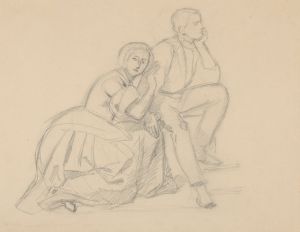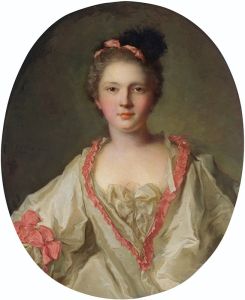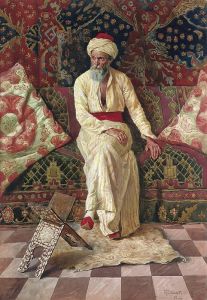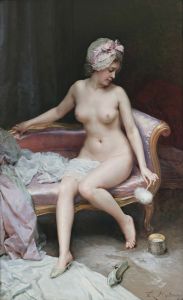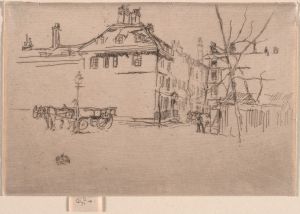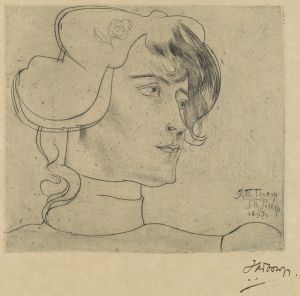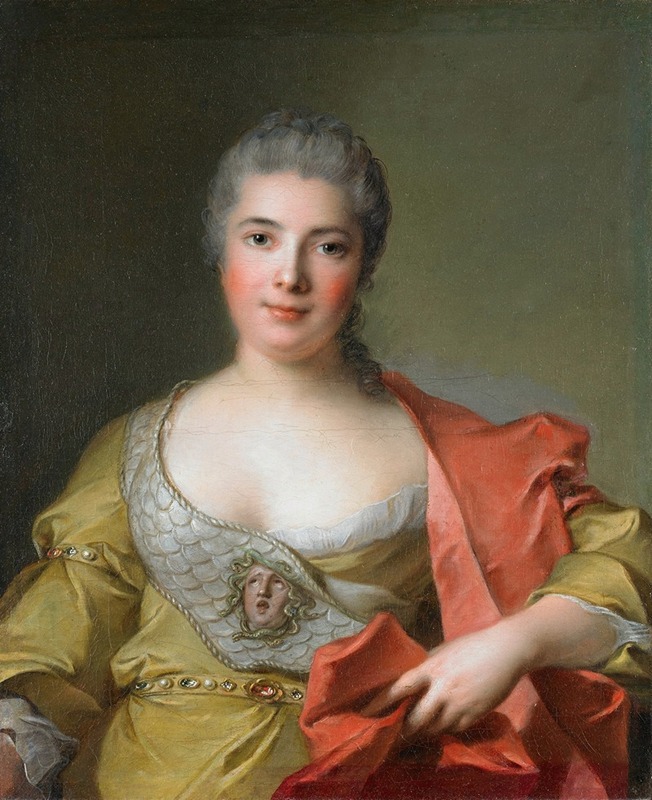
Adélaïde-Julie Mirleau de Neuville
A hand-painted replica of Jean-Marc Nattier’s masterpiece Adélaïde-Julie Mirleau de Neuville, meticulously crafted by professional artists to capture the true essence of the original. Each piece is created with museum-quality canvas and rare mineral pigments, carefully painted by experienced artists with delicate brushstrokes and rich, layered colors to perfectly recreate the texture of the original artwork. Unlike machine-printed reproductions, this hand-painted version brings the painting to life, infused with the artist’s emotions and skill in every stroke. Whether for personal collection or home decoration, it instantly elevates the artistic atmosphere of any space.
Jean-Marc Nattier (1685–1766) was a prominent French Rococo painter, renowned for his portraits of the French aristocracy, often depicting his sitters in allegorical or mythological guises. One of his works, Adélaïde-Julie Mirleau de Neuville, is a portrait that exemplifies his skill in capturing the elegance and refinement of his subjects.
The painting portrays Adélaïde-Julie Mirleau de Neuville, a member of the French nobility. Nattier's style is evident in the delicate rendering of her features, the luxurious textures of her clothing, and the harmonious use of color. As with many of his portraits, the sitter is presented with a sense of grace and poise, reflecting the ideals of beauty and sophistication of the Rococo period.
Nattier often incorporated allegorical or symbolic elements into his portraits, though it is unclear if this specific painting includes such motifs. The artist's ability to blend portraiture with allegory made his works highly sought after by the French elite during the 18th century.
The exact date of the painting is not documented, but it likely falls within the height of Nattier's career, which spanned the 1730s to the 1750s. The painting is characteristic of his oeuvre, showcasing his mastery of light, texture, and composition.
Further details about Adélaïde-Julie Mirleau de Neuville herself are scarce, as she does not appear to have been a widely documented historical figure. Her inclusion in Nattier's body of work, however, suggests her prominence within the social circles of her time.
The current location of the painting is not specified in available records, and its provenance remains unclear. Like many of Nattier's works, it may reside in a private collection or a museum specializing in 18th-century French art.
This portrait serves as a testament to Nattier's ability to immortalize the elegance and status of his sitters, contributing to his enduring reputation as one of the leading portraitists of his era.





